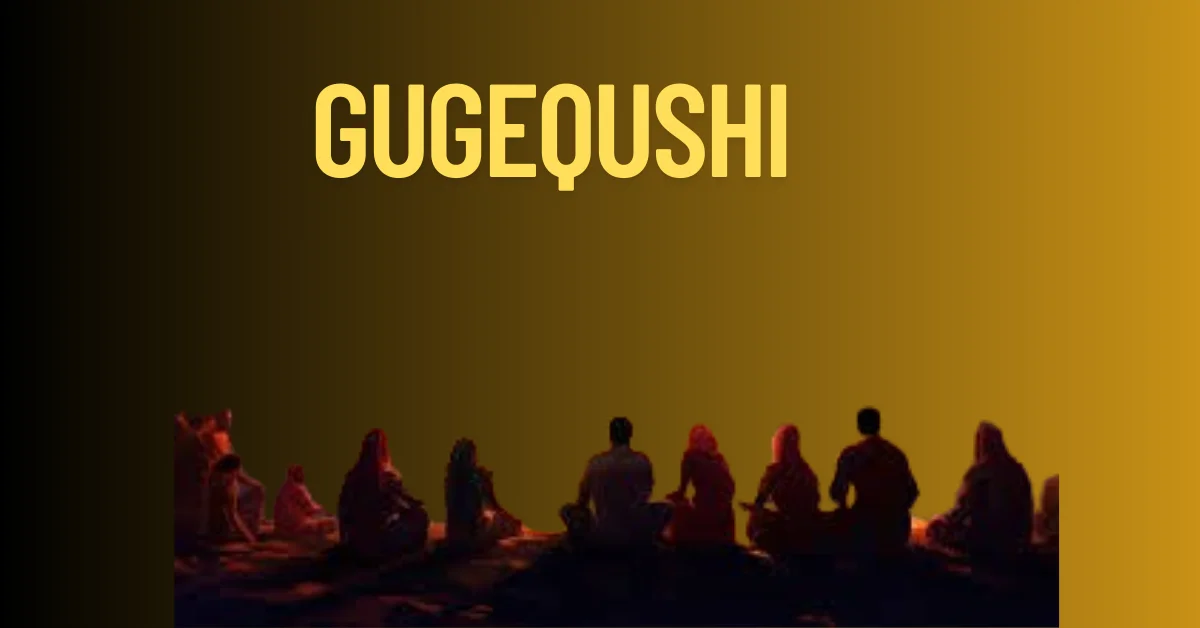Introduction to Gugequshi – a unique form of storytelling
In the vast tapestry of storytelling traditions around the world, Gugequshi stands out as a vibrant and enchanting form. With roots deeply embedded in ancient culture, it weaves tales that resonate through time. This unique style combines narrative depth with artistic flair, offering listeners a glimpse into human experiences that transcend generations. As we delve into this fascinating art form, prepare to uncover its origins, explore its intricate techniques, and witness how it has evolved while maintaining its core essence. Whether you’re a lover of folklore or simply curious about diverse cultures, Gugequshi promises to captivate your imagination and spark your interest in stories waiting to be told.
The origins and history of Gugequshi
Gugequshi traces its roots back to ancient Chinese storytelling traditions. Initially, it emerged as a popular form of entertainment in rural communities. The art flourished through oral narratives passed down from generation to generation.
Historically, Gugequshi was characterized by vivid imagery and rich cultural references. It was an essential means of preserving local folklore and wisdom. Storytellers often performed during festivals or communal gatherings.
As time progressed, Gugequshi evolved alongside societal changes. Influences from other art forms began to seep into the performances, enriching their content and style. This adaptability allowed Gugequshi to survive despite modernization pressures.
The intertwining of history and culture in Gugequshi showcases its significance beyond mere storytelling—it’s a living archive of human experience shaped by the passage of time.
The artistry and techniques of Gugequshi performances
Gugequshi performances are a vibrant tapestry of sound, movement, and emotion. The artistry lies in the seamless blend of storytelling with traditional music and dance. Performers often use dynamic gestures to convey complex narratives, drawing the audience into their world.
The techniques employed are as varied as the tales themselves. Vocal modulation plays a crucial role; storytellers manipulate pitch and tone to evoke different characters or moods. Instruments like drums and flutes enhance the experience, creating an immersive atmosphere.
Costuming also adds depth to each performance. Bright colors and intricate patterns reflect cultural significance while helping define roles within stories.
Improvisation is key in Gugequshi, allowing performers to adapt tales based on audience reactions or current events. This flexibility keeps traditions alive while making them relevant today—each performance becomes a unique event that resonates deeply with viewers.
Modern adaptations and innovations of Gugequshi
Modern adaptations of gugequshi breathe fresh life into this ancient art form. Today, storytellers blend traditional narratives with contemporary themes. They explore modern issues like identity and culture.
Innovative techniques enhance performances too. Digital media plays a role, bringing visual elements to the stage. Some artists incorporate multimedia presentations that captivate audiences in new ways.
Collaborations with musicians and dancers further enrich the storytelling experience. These partnerships create dynamic performances that resonate across generations.
Workshops are gaining popularity as well. They invite young people to learn and participate, ensuring the tradition evolves while remaining true to its roots.
Social media platforms showcase gugequshi’s charm on a global scale. Clips of lively performances attract viewers who might never have encountered this unique storytelling style otherwise. The fusion of old and new continues to spark interest in an age-old craft, making it relevant for today’s audience.
Examples of popular Gugequshi stories
Gugequshi is rich with captivating tales that have stood the test of time. One popular story revolves around the legendary hero, Tianshan Chen. His adventures in battling mythical beasts and protecting his village resonate deeply with audiences.
Another beloved tale features the clever fox spirit, Huyao. With her cunning tricks, she outsmarts both gods and humans alike, teaching valuable lessons about wisdom and humility.
The poignant story of Zhang San tells of love lost during turbulent times. It captures the heartache of separation while celebrating hope for reunion against all odds.
These stories often blend humor with moral teachings, making them accessible to listeners of all ages. Gugequshi’s diverse narratives reflect cultural values and human experiences, ensuring their relevance even today. Each tale invites you into a world where imagination knows no bounds and ancient truths come alive through vibrant storytelling.
Preserving the tradition: efforts to keep Gugequshi alive
Efforts to preserve Gugequshi are vibrant and multifaceted. Community workshops have sprung up, inviting young people to engage with this ancient art form. Through hands-on experience, they learn the nuances of storytelling.
Schools in various regions incorporate Gugequshi into their curriculums. This initiative fosters appreciation among students for cultural heritage while ensuring that the tradition is passed down through generations.
Digital platforms also play a significant role in keeping Gugequshi alive. Social media campaigns showcase performances, drawing wider audiences and sparking interest from those unfamiliar with this unique storytelling style.
Collaborations between artists and cultural organizations further enhance these efforts. They organize festivals dedicated to Gugequshi, bringing together performers and enthusiasts alike, celebrating its rich tapestry of narratives.
As traditional aspects meet modern innovations, the legacy of Gugequshi continues to thrive amidst changing times.
Conclusion: the enduring charm and significance of Gugequshi in modern times
Gugequshi weaves together the threads of history, culture, and creativity. It stands as a testament to the power of storytelling in shaping identity and community. This unique form connects people with their past while also resonating with contemporary audiences.
As modern adaptations breathe new life into age-old tales, Gugequshis continues to evolve. The art form remains relevant, thanks to innovative storytellers who embrace technology and fresh narratives. They honor tradition while pushing boundaries.
Efforts to preserve this cultural gem are vital. Workshops, festivals, and educational programs foster appreciation among younger generations. These initiatives ensure that the richness of Gugequshis will not fade away but thrive for years to come.
The charm of Gugequshis lies not only in its stories but also in its ability to connect hearts across time and space. Its significance extends beyond mere entertainment; it encapsulates shared experiences, values, and dreams that bind us all together in an ever-changing world.
FAQs
What is Gugequshi?
Gugequshi is a traditional storytelling form rooted in ancient culture, blending narrative art, folklore, and performance.
How is Gugequshi evolving today?
Modern technology and global platforms are giving Gugequshi a new voice, allowing storytellers to adapt ancient tales for contemporary audiences.
Is Gugequshi still relevant in the digital age?
Absolutely. Its rich narrative style and emotional depth make it highly adaptable for podcasts, animations, and digital storytelling.
Who can participate in Gugequshi storytelling?
Anyone with a passion for stories can join the Gugequshi tradition—whether as a performer, writer, or digital creator.
Why is Gugequshi important to preserve?
It carries cultural wisdom and values passed down through generations, serving as a bridge between heritage and modern identity.

